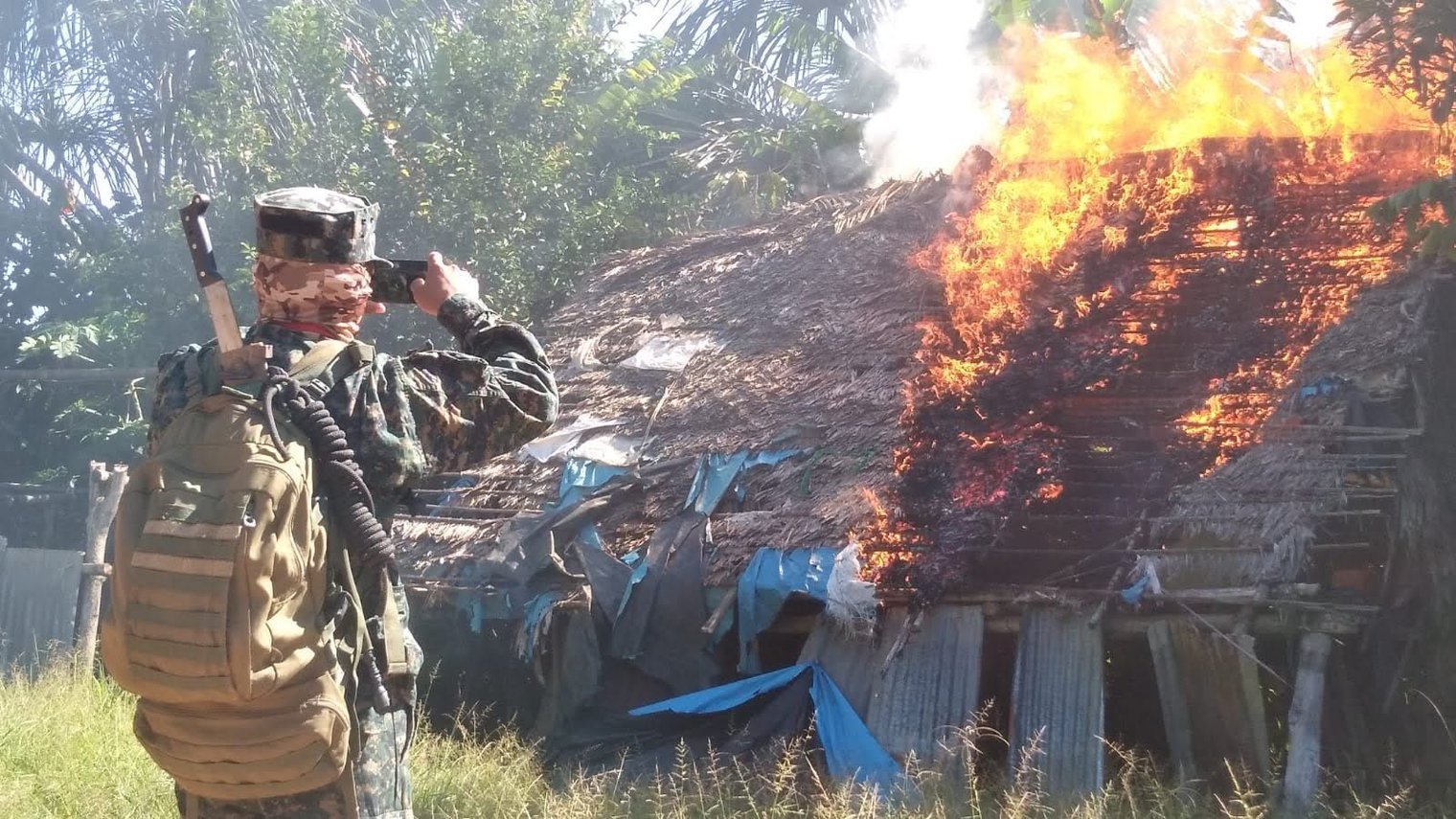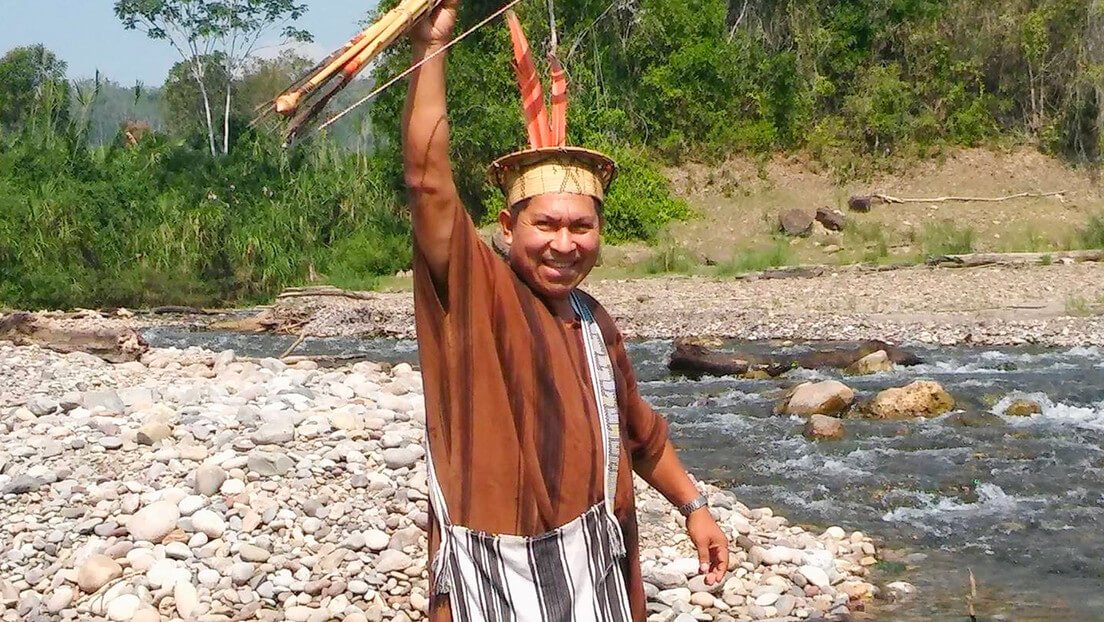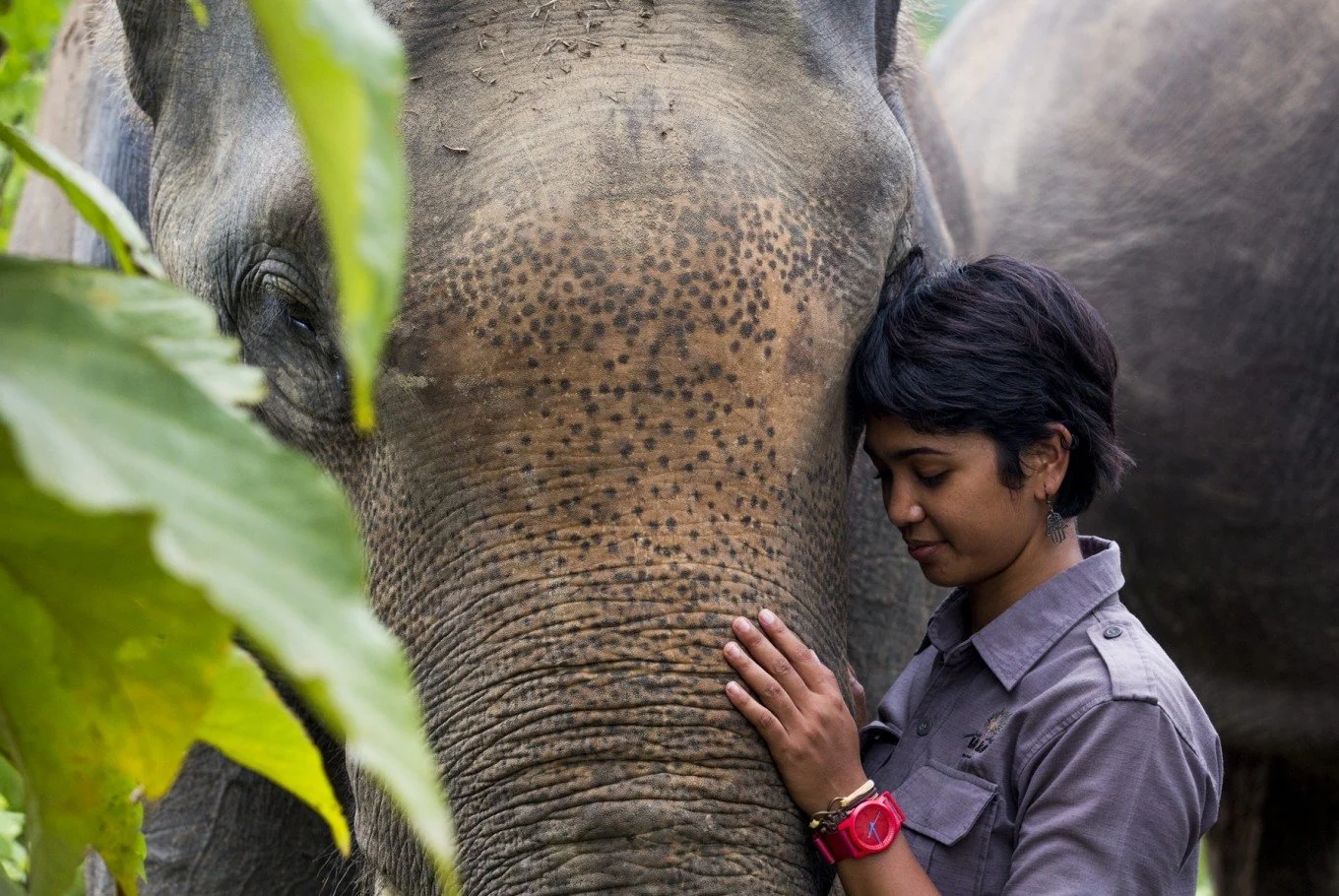Indigenous Protection of Asháninka Communal Reserves in Otishi National Park, Peru
Introduction
Global Conservation is helping the Ashaninka People of Peru protect their Communal Reserves adjacent to Otishi National Park, a large area of highly threatened indigenous lands facing violent conflict from invaders and illegal loggers clearing the forests for illicit crops and for the installation of illegal infrastructure (clandestine airstrips).
In May 2023, Global Conservation was invited by the Government of Peru to assist in deploying Global Park Defense in two critical areas facing deforestation: Otishi National Park and Asháninka Communal Reserve, covering over half a million hectares in the Amazon region of Peru.
GC was asked by the Director of SERNANP and the Joint Command of the Armed Forces (VRAEM Special Command) to set up Global Park Defense in the National Park and Communal Reserves to protect them from fires, illegal farming expansion for coca cultivation, cutting down trees to build illegal infrastructure, illegal logging of forests, and poaching wildlife.
In the same vein, the Ashaninka Communities invited GC to implement the Community Protection Program, which involves carrying out intelligent surveillance using ancestral technologies and knowledge, strengthening the management of the communal territory, and contributing to the protection of the Communal Reserves and the Park. The implementation of this program has the collaboration of ECOAshaninka.
“It is much more than monitoring the territory; it is about a spiritual connection and care for nature because they are guardians of the forest. So this is how the figure of the Asháninka ecoguards arises.”
Otishi National Park was created in the high jungle area of the Vilcabamba Range, traversing the Departments of Junin and Cusco. The stated aim of this National Park is to protect the outstanding natural beauty of the area and the cultural integrity of the two indigenous communities—the Asháninka and the Machiguenga.
The Asháninka are the largest indigenous group in Peru's Amazon and inhabit a large area adjacent to Otishi National Park. Global Conservation is working with the national park authorities and the indigenous authorities of both the Ashaninka and the Machiguenga Reserves.
Otishi National Park protects the Cordillera de Vilcabamba and its beautiful river basins of the Ene, Tambo, and Urubamba rivers. 99% of the surface of Otishi National Park is still in a natural state due to its steep mountain geology and impenetrable forests, but surrounding areas are largely cut or fragmented with heavy clearing for agriculture.
The Asháninka Communal Reserve is recognized as a protected area category in Peru, where its indigenous and other communities should benefit and share responsibility for protection and management.
The Asháninka are estimated to number between 25,000 and 45,000 people who live in remote valleys and are mostly dependent on subsistence agriculture. They use the slash-and-burn method to clear lands and plant yucca roots, sweet potatoes, corn, bananas, rice, coffee, cacao, and sugar cane using biodiversity-friendly techniques. Hunting, fishing, and foraging for fruits and vegetables in the jungle are core to their livelihoods. They use bows and arrows or spears as their traditional weapons of choice.
For over a century, there has been encroachment onto Asháninka land by loggers, Maoist guerrillas, drug traffickers, colonists from other regions, and oil companies.
Within the framework of the agreement signed between the Global Conservation Foundation and the Amazon and National Surveillance Directorate (DIVAN), international experts from the Earth Ranger company visited the event to train indigenous representatives of the Amazon region in the use of the Digital Geospatial Information Platform, together with Air Force personnel. The event was attended by members of the Shipibo, Ashaninka and Awajún communities. The delegations were received by the Director of DIVAN, FAP Colonel David Cuya Postigo, who expressed to them the importance of the work carried out by indigenous peoples as EcoGuards, to combat deforestation and global warming.
Global Conservation’s Influence
In Otishi National Park, we have built the first-ever cooperation for park and Communal Reserve protection between the Asháninka People in the Asháninka Communal Reserve of Peru, SERNANP, and the Joint Command of the Peruvian military to assist local indigenous communities to better protect their indigenous territories against illegal logging, coca cultivation, and invasive settlements.
The Asháninka Communal Reserve is recognized as a protected area category in Peru, where its indigenous and other communities benefit and share responsibility for protection and management. Global Conservation is helping to make this possible.
Asháninka Protection Force for Otishi National Park and the Asháninka Communal Reserve combined with National Park Rangers, law enforcement, and military support.
Deploying Global Park Defense (GPD) in partnership with the Asháninka Indigenous Communities, SERNAP, the Peruvian Air Force, Naval Marines, and law enforcement will deliver the critical expansion of protection across over 400 kilometers and 400,000 hectares focused on two primary areas with 10 indigenous communities.
This integrated model, which Global Conservation Peru created over the course of five years in Sierra del Divisor National Park, is currently being scaled to include the combined 5 million hectares of Otishi and Manu National Parks and their Indigenous Territories.
Never before have Peru's National Parks worked so closely with all key governmental organizations and their combined resources in partnership with local communities to stop the environmental damage of its National Parks. Due to Peru's long history of establishing National Parks and Indigenous Territories, we now need to work harder together in order to protect them.
Deploying Global Park Defense and Community Protection:
Satellite and Aerial Forest Monitoring
Equipped and Trained 30+ Community Ecoguards from 10 Communities for more than five years
Hired an Enforcement Manager living in the Region
Logistics for 10,000+ kilometers of SMART Patrolling over 4 years
Coordinate Arrests and Relocations with Park Authorities (SERNNP) and Law Enforcement
Intensive patrolling by foot, truck, and boat in these areas.
Satellite, aerial, and terrestrial forest monitoring
Military personnel burn down a coca plantation.
The Fight Against Coca Plantations
For over a century, there has been encroachment onto Asháninka land by loggers, Maoist guerrillas, drug traffickers, colonists from other regions, and oil companies. Deforestation just outside Otishi National Park for coca cultivation has devastated 80% of the rainforests.
In the past ten years, previously untouched areas have been assaulted by a combination of coca cultivation, agricultural expansion, cattle ranching, and now urban expansion.
Coca leaves for sale at a market in Peru. Photo ©shutterstock
In order to eliminate coca cultivation within the National Park, major police and military operations are often needed to search and destroy fields that are deep within the jungle. One recent, massive operation required over 200 police and military personnel focused on removing the cocaine cartels operating in a national reserve, which destroyed over 100,000 hectares of intact primary forest.
Now, by building multiple new ranger stations staffed with many police in key access areas, Ashaninka Reserve is holding back the regrowth of this cancerous activity in pristine, intact tropical forests.
One of the clandestine landing strips is located near the Puerto Azul native community. Image courtesy of Mongabay/AIDESEP.
Clandestine landing strips in the rainforest can be seen from the air. Within walking distance are clusters of deforestation—coca cultivation between one and five hectares, turning intact forests into fragmented, degraded forests. The environmental impact of narcotrafficking, or narco-deforestation, has been significant, not only in Peru but throughout South America and Central America too, where it is estimated to be responsible for a quarter of all forest loss in Guatemala, Honduras, and Nicaragua.
Up until the more recent introduction of a genetically altered coca plant that thrives in the Amazon's lowlands, the coca plant used to make cocaine was only grown in isolated locations at high elevations. This has caused a catastrophe, clearing hundreds of thousands of hectares of intact tropical Amazon forests. Now, even the farthest reaches of the Amazon in National Parks and Indigenous Reserves are facing land clearing for coca cultivation, and local communities and park rangers are in serious danger.
Ashaninka indigenous leader Santiago Contoricon Antúnez was murdered on April 9, 2023 in Puerto Ocopa, Junin.
Following the murder of the Ashaninka leader Contoricon in 2023, the Ashaninka Communities settled in the Apurimac, Ene, and Mantaro River Valleys (VRAEM, Peru) and requested support from Global Conservation to deploy Global Park Defense and Community Protection.
GC funds a drone for deployment to watch over their lands.
Equiping the Asháninka
In 2023-24, Community Ecoguards have been equipped and trained to patrol with drones and GPS to identify threats in their Communal Reserve, and respond with an integrated force of National Park Rangers, law enforcement, and military support.
GC deployed Global Park Defense (GPD), patrolling over 1,000 kilometers and covering 400,000 hectares, focused on two primary high-threat areas in cooperation with ten indigenous communities.
Using satellites to identify deforestation in the Otishi National Park and surrounding Communal Reserves, which are supported by high-resolution aerial overflights to clearly identify specific areas for targeting combined interdictions, we enable the Asháninka to prioritize their human resources by deciding where and when to patrol, when to secure backup from law enforcement, and where to better locate monitoring stations to stop deforestation and illegal activities.
By responding rapidly to threats, illegal settlements and coca growers are discouraged from entering and destroying communal forests and the associated killing of wildlife to feed their crews. By increasing the fear of interdiction and arrest, we have greatly discouraged illegal activities, especially against critical access routes.
Integrated Protection for Indigenous Territories: Asháninka Communal Reserves
Satellite and Aerial Monitoring
Park-wide Communications
Rapid Response Teams
Border Demarcation
Biodiversity Recovery
Learning to use SMART technology and GC Community Earth Ranger.
Satellite imaging records and tracks the history of locations where Eco Gaurds go and when they find problem areas.
Mapping Deforestation for Rapid Response
Using satellites to identify deforestation in the National Park and surrounding Communal Reserves, which are supported by high-resolution aerial overflights to clearly identify specific areas for targeting combined interdictions, enables the Park Authority to prioritize scarce resources by deciding where and when to patrol, when to secure backup from law enforcement, and where to better locate ranger stations to stop deforestation and illegal activities.
By responding rapidly to threats, illegal settlements, and coca growers are discouraged from entering and destroying National Park forests and associated killing of wildlife to feed their crews. By increasing the fear of interdiction and arrest, we greatly discourage illegal activities within the National Park and via critical access routes.
Due to rapidly changing weather and extensive cloud cover in the Amazon, getting clear photography and sensor information can be quite tricky. In order to have concise information for on-the-ground patrols, we use a combination of four critical layers:
Satellite
Airplane
Drone
Intelligence























































